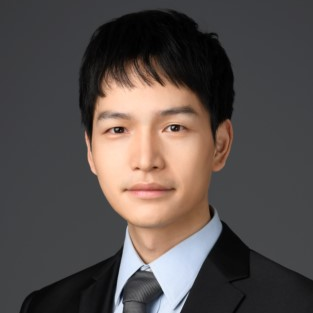Wide and Ultrawide Band Gap Semiconductors: Materials and Devices
A special issue of Electronics (ISSN 2079-9292). This special issue belongs to the section "Semiconductor Devices".
Deadline for manuscript submissions: 31 October 2024 | Viewed by 845
Special Issue Editors
Interests: wide bandgap semiconductor; electronic devices; functional oxides
Special Issues, Collections and Topics in MDPI journals
Special Issue Information
Dear Colleagues,
Wide- and ultrawide-bandgap semiconductors exhibit competitive advantages in developing next-generation power electronics, ultraviolet LEDs, photodetectors, and quantum devices. Featured by a bandgap larger than 3.2 eV, emerging wide- and ultrawide-bandgap semiconductors include oxides (Ga2O3 and ZnGa2O4), nitrides (GaN, AlGaN, and BN), carbide (SiC), and diamond. Exploring the full potential of these semiconductors requires the comprehensive study of material growth and structural characterization, doping control and defect analysis, and device design and application. Therefore, this Special Issue intends to present a themed collection related to the field of wide- and ultrawide-bandgap semiconductor devices.
We invite the submission of original research contributions and reviews in areas including, but not limited to, the homoepitaxy and heterojunction of wide- and ultrawide-bandgap semiconductors; metastable phase control and stabilization; quantum-well fabrication and characterization; the development of novel growth and characterization methods; theoretical calculations of the formation and activation of semiconductor defects; novel transport phenomena and defect characterization techniques; device simulation; power device applications, including diodes and metal-oxide-semiconductor field-effect transistors (MOSFETs); ultraviolet LEDs and photodetectors; and quantum information devices.
Specific research areas may include (but are not limited to) the following:
- Epitaxy of wide- and ultrawide-bandgap semiconductors, including oxides (Ga2O3 and ZnGa2O4), nitrides (GaN, AlGaN, and BN), carbide (SiC), and diamond;
- Heterostructure design, phase control, and interface-driven phenomena;
- DFT calculations of defects in semiconductors;
- Carrier transport simulation and characterization methods;
- Power devices including diodes and MOSFETs;
- Ultraviolet LEDs and photodetectors.
Prof. Dr. Wenrui Zhang
Prof. Dr. Wei Guo
Guest Editors
Manuscript Submission Information
Manuscripts should be submitted online at www.mdpi.com by registering and logging in to this website. Once you are registered, click here to go to the submission form. Manuscripts can be submitted until the deadline. All submissions that pass pre-check are peer-reviewed. Accepted papers will be published continuously in the journal (as soon as accepted) and will be listed together on the special issue website. Research articles, review articles as well as short communications are invited. For planned papers, a title and short abstract (about 100 words) can be sent to the Editorial Office for announcement on this website.
Submitted manuscripts should not have been published previously, nor be under consideration for publication elsewhere (except conference proceedings papers). All manuscripts are thoroughly refereed through a single-blind peer-review process. A guide for authors and other relevant information for submission of manuscripts is available on the Instructions for Authors page. Electronics is an international peer-reviewed open access semimonthly journal published by MDPI.
Please visit the Instructions for Authors page before submitting a manuscript. The Article Processing Charge (APC) for publication in this open access journal is 2400 CHF (Swiss Francs). Submitted papers should be well formatted and use good English. Authors may use MDPI's English editing service prior to publication or during author revisions.
Keywords
- wide-gap semiconductors
- epitaxy
- defects
- interface
- power electronics
- LED
- photodetectors
- oxides
- nitrides
- diamond






